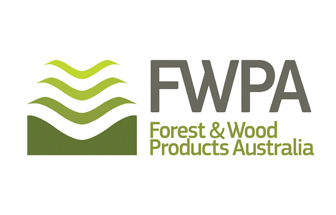LOOSING MONEY SEEMS TO BE A GROWING HABIT AT FPC
AS ‘YEAR FROM HELL’ BLUDGEONS WA FOREST INDUSTRY
THE embattled WA Forest Products Commission has announced a troubling $27 million loss in its 2022 annual report.
In the year from hell when the rug was pulled out from under the native forest industry the FPC also needed a $14 million injection from Treasury to ensure that it had enough cash. This annual report, usually effusive about achievements, is tight-lipped about the FPC’s performance. It’s time for a serious rethink about how the state goes about managing its forest resources.
Both the native forest and plantations businesses chalked up losses, but luckily there was a major upturn in the sandalwood business from China, with a 50% increasing in revenue. In fact, overall sales revenue increased by $10.5 million, unfortunately expense increases were even greater.
The fracture in the industry caused by the government’s native forest policy putsch hasn’t been helped by the FPCs missing its log delivery targets for customers with its production levels 13% off demand for softwoods and 20% off for native forest logs. You wonder at the government’s logic of paying employees to leave the industry, there just aren’t enough workers to meet the contractual obligations.
The performance of the FPC has slid dramatically under the current government. The minister Dave Kelly’s results are well below those of his Coalition predecessor Mia Davies.
 Dave Kelly took over the FPC in 2017 when it was operating profitably and paying a dividend. Today government forestry is starting to look like a basket case. If this was a private company the shareholders would be calling for a change in management to turn the business around.
Dave Kelly took over the FPC in 2017 when it was operating profitably and paying a dividend. Today government forestry is starting to look like a basket case. If this was a private company the shareholders would be calling for a change in management to turn the business around.
No doubt the minister will give excuses for this calamity, but the truth is that WA is experiencing a boom in the housing market …but log supply targets aren’t being met. The shortfall in log supply has seen wood markets rely increasingly on imports. Sadly this will be an increasing trend due to historic underinvestment in timber development in WA.
As well as not being able to supply the logs the market needs, the government wood prices are below the market. Timber prices have gone through the roof, yet WA’s contracts lag behind. The government appears to be missing out on millions of dollars due to under-pricing.
In other aspects of the FPC’s performance there is a shortfall in achieving many of its targets. Of greatest concern is the management of the forest resource. For many years the pine estate has been overstocked due to a lag in the thinning program. The same concern exists for the karri forests. Without thinning, the growth of wood slows and future sawlog yields are diminished.
Equally the rate of plantation establishment is well below target, only achieving 64% of the 2292-ha goal. The Forestry Minister has boasted about the government’s success in expanding the plantation estate. In fact, under Dave Kelly’s leadership there has been a drop of 3200 ha in the area of pines to 2020. The $350 million expansion funding is to be applauded, but it is proving to be real struggle to acquire land in the current red hot agricultural land market. The first year of the pine expansion sourced just 600 ha.
Areas of highest achievement for the FPC were in environmental performance and regeneration in the karri forest. Perversely, these are the areas of greatest public criticism. It would seem that despite very positive outcomes there is a credibility gap in the mind of the public. Unfortunately there has been no effort by the government to promote the industry.
Given the decline in FPC’s financial performance, and a policy axing the native forest industry, it seems time to reconsider how the state manages its forest industry.
If the future is to be entirely focused on plantations it’s time to have a wider discussion about what the state’s timber needs are and how these can be grown and managed in the future. There have been positive steps in this space with the FPC developing partnerships with FIFWA, the SW Timber Hub and the Water Corporation. However. There is a major hole where there needs to be a definitive government strategy on the future demand and supply of timber resources.
To be more effective the role of government could focus on policy, strategy and technical support, providing significant financial incentives to growers rather acting than as an investor itself. The confusion between its two roles has meant that the FPC has done neither well.
– From GAVIN BUTCHER









